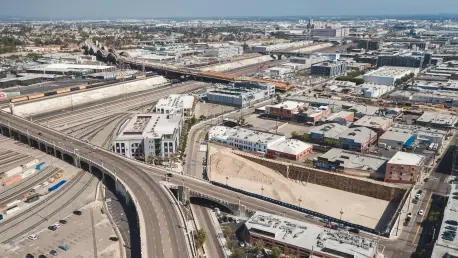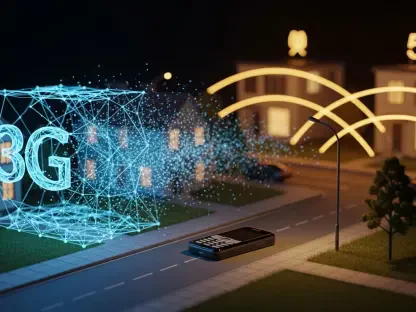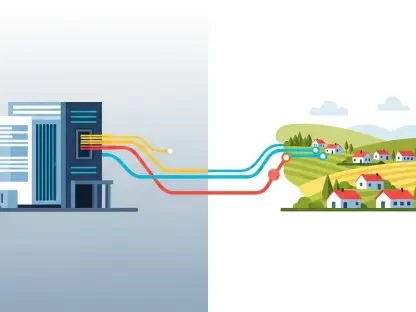I’m thrilled to sit down with Vladislav Zaimov, a seasoned telecommunications specialist with deep expertise in enterprise telecom solutions and risk management for vulnerable networks. With years of experience in the field, Vladislav offers a unique perspective on the rapid advancements in mobile network technology. Today, we’re diving into the recent 5G expansion efforts by Deutsche Telekom in Germany, exploring the scale of their rollout, the technical innovations behind it, and what this means for users and businesses alike. Our conversation will touch on the impressive coverage milestones, the strategic use of frequency bands, and the push toward ultra-high-capacity networks.
How would you describe the scope of Deutsche Telekom’s recent 5G network expansion in Germany, and what stands out to you about their progress in August?
I’m really impressed by the scale of Deutsche Telekom’s efforts. In August alone, they added 132 new mobile radio sites across the country, with significant growth in states like North Rhine-Westphalia, Bavaria, and Baden-Württemberg. What’s equally noteworthy is the upgrade of 533 existing locations, enhancing capacity and bringing 5G to 128 of those sites for the first time. This kind of dual focus—expanding footprint and boosting existing infrastructure—shows a commitment to both reach and quality, which is critical for a seamless user experience.
What kind of impact are these upgrades having on the average user in terms of performance and connectivity?
The upgrades are transformative for users. With 5G activated at many sites for the first time, people are seeing faster data speeds and lower latency, which means smoother streaming, quicker downloads, and more responsive applications. This isn’t just about raw speed—it’s about reliability and consistency, especially in high-traffic areas. Overall, it elevates the mobile experience, whether you’re video calling, gaming, or working remotely. It’s a noticeable step up from what users might have experienced even a year ago.
Deutsche Telekom has achieved 5G access for 99% of households in Germany. Can you unpack what this milestone means for the population and how it fits into the broader connectivity landscape?
Reaching 99% household coverage with 5G is a massive achievement. For the average person, it means that almost wherever you are in Germany, you can tap into next-generation speeds and connectivity, supporting everything from smart home devices to remote work. Compared to their LTE coverage, which is nearly 100%, it shows they’ve built a robust foundation and are now layering 5G on top of it at an incredible pace. That said, there are still small pockets—often rural or remote areas—that might not yet have full access, and bridging that last 1% will be a challenge worth watching.
Can you explain the strategy behind using different frequency bands in their 5G network and how they complement each other?
Absolutely. Deutsche Telekom’s approach is quite strategic. Low-band frequencies, like 700 and 800 MHz, are used for their long range and ability to penetrate buildings, ensuring wide coverage even in challenging environments. Mid-band frequencies, such as 1,800 MHz and 2.1 GHz, boost performance with higher transmission rates and faster response times, making them ideal for urban settings. Then there’s the 3.6 GHz band, deployed at traffic hubs and densely populated areas, which delivers exceptional speeds thanks to fiber-optic connections. Together, these bands create a balanced network that addresses both coverage and capacity needs.
I’ve heard about their goal to build an ultra-high-capacity network. What can you tell us about the steps they’re taking to achieve this vision?
Deutsche Telekom is aiming to double their network capacity, which is ambitious but exciting. They’re implementing a combination of hardware upgrades and frequency optimizations across their sites. A key target is ensuring that 90% of their locations can support download speeds of up to 1 gigabit per second per cell. For businesses and heavy data users, this translates to unparalleled performance—think real-time data processing, seamless cloud applications, and support for IoT ecosystems. It’s laying the groundwork for future innovations in industries like manufacturing and healthcare.
What is your forecast for the future of 5G expansion and its impact on both consumers and industries in Germany over the next few years?
I believe 5G in Germany is on the cusp of becoming truly transformative over the next few years. For consumers, we’ll see even more integration into daily life—smarter cities, enhanced augmented reality experiences, and connectivity that’s always on, no matter where you are. For industries, 5G will unlock new efficiencies, especially with private networks using mmWave spectrum for ultra-low latency applications, like automated factories or remote surgeries. The challenge will be ensuring equitable access and managing the cybersecurity risks that come with such expansive networks, but I’m optimistic that companies like Deutsche Telekom will continue to push boundaries while addressing these concerns.









